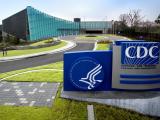May 31, 2011 (CIDRAP News) – Reported severe illnesses caused by Escherichia coli in Germany and neighboring countries continued to pile up in recent days, while mysteries about the source of the infection, why it's so severe, and why it seems to strike mainly women remained unresolved.
Germany's Robert Koch Institute (RKI) said today the number of cases of hemolytic uremic syndrome (HUS), a potentially fatal kidney disorder, in the outbreak reached 373, with 6 deaths. The Associated Press (AP) said the death toll for all countries has reached 16, with 1,150 E coli cases in Germany and "hundreds more" in other countries.
Yesterday's HUS total in Germany was 329 cases, two thirds of them in women, the European Centre for Disease Prevention and Control reported.
In the United States, two cases of HUS have been reported in people who recently traveled to Hamburg, Germany, the apparent epicenter of the outbreak, the Centers for Disease Control and Prevention (CDC) reported this afternoon. But no confirmed infections with the rare outbreak strain, E coli O104:H4, have been reported in the US, officials said.
The CDC is working with state health departments to learn more bout the two HUS cases and identify others, the agency said in an e-mailed statement. It said anyone who recently traveled to Germany and has signs or symptoms of a Shiga-toxin producing E coli (STEC) infection or HUS should seek medical care and tell their provider about the outbreak in Germany and the importance of being tested.
On the basis of a case-control study and limited lab evidence, the outbreak is believed to be linked to fresh cucumbers, lettuce, and tomatoes, especially Spanish cucumbers, but that has not been confirmed.
German officials have identified the outbreak strain as a multidrug-resistant E coli O104:H4, which the CDC termed a "very rare" strain. The agency said today that this precise serotype has never been seen in the United States and has rarely been seen in other countries. As reported previously, a small E coli O104 outbreak occurred in Helena, Mont., in 1994, but the serotype was O104:H21, not O104:H4.
German officials today continued to warn against eating raw cucumbers, lettuce, and tomatoes, especially in northern Germany, according to the RKI. A public health laboratory in Hamburg on May 26 identified E coli on four cucumbers, three of them from Spain, as reported previously. But according to today's AP report, Hamburg officials said tests on two of the cucumbers pointed to a strain different from the outbreak strain.
The CDC said it was "not aware that a specific food has been confirmed as the source of the infections," but it said travelers to Germany should be aware of the warning against eating cucumbers, lettuce, and tomatoes there.
Meanwhile, the US Food and Drug Administration is stepping up inspections of cucumbers, lettuce, and tomatoes from Spain, according to a Reuters report today. FDA spokesman Doug Karas said Spanish cucumbers are not imported into the United States in large numbers at this time of year.
Biggest E coli outbreak?
The outbreak is clearly one of the largest E coli epidemics on record, but the CDC stopped short of calling it the biggest ever. "We are still learning more about the overall size of this outbreak," the agency said. "The number of HUS cases involved indicates that the outbreak is very large."
The agency also commented, "It is too early to know why this is such a large outbreak. The large size may have to do with contamination of a popular food item. However, to our knowledge a specific food vehicle has yet to be confirmed. It is also possible that the unusual strain is particularly likely to cause HUS."
Another persisting question is why the apparent proportion of HUS cases has been so high. A total of 373 HUS cases out of about 1,150 E coli cases signals an HUS rate of about 32%, far higher than in previous E coli outbreaks. In the outbreak linked to Jack in the Box hamburgers in 1992 and 1993, for example, about 7% of all cases involved HUS.
Antibiotics as risk factor
Craig Hedberg, PhD, a foodborne disease expert at the University of Minnesota School of Public Health, commented today that if antibiotics are being used to treat E coli patients in Europe, this might help explain the high risk of HUS in the outbreak.
"There is good evidence that treating a patient infected with E coli O157:H7 with an antibiotic to treat their diarrhea may increase their risk for developing HUS," Hedberg said. "Most E coli O157:H7-associated HUS cases involve children, and children are not typically treated with ciprofloxicin.
"However, ciprofloxicin would be the drug of choice for empirically treating an adult with an acute diarrheal illness [in which the specific pathogen has not been identified]. If this were a common practice in Germany, it could account for some of the apparently high risk of HUS associated with this outbreak. I don't have any information on this, but it is certainly something that should be evaluated."
Hedberg called the size and severity of the outbreak "unprecedented" and predicted that it will lead to research that will "greatly expand our understanding of the pathogenesis and variability" of enterohemorrhagic E coli.
In other observations, he said that if fresh produce items are confirmed as the source of the outbreak, that may help explain why so many of the patients are women. Produce has been the source food in some Salmonella and E coli O157:H7 outbreaks that mainly involved women, he noted, adding, "Because women are more likely to eat these food items, they are more likely to be exposed to the [E coli] strain contaminating the food items," he said.
See also:
May 27 CIDRAP News story "Questions abound in European E coli outbreak"




















